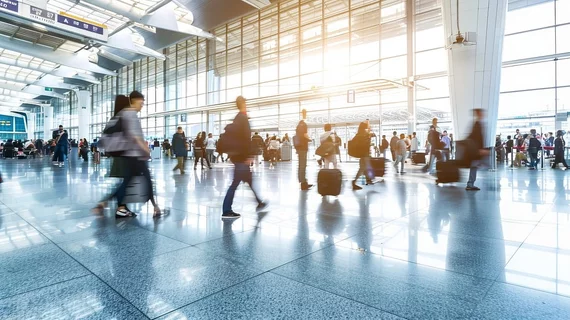Measles is on the march from airports to places near us
The U.S. eradicated measles in 2000. Today it’s making a comeback. What explains the unhappy revival?
According to a consulting epidemiologist who counts the CDC among her clients, the return of measles to America mainly owes not to waves of illegal immigrants crossing into our country but to Americans who travel abroad and come back infected.
“In 2019, our last bad measles year, 77% of index cases (i.e., patient zero for an outbreak) were U.S. residents who had recently traveled and returned home infected,” writes Katelyn Jetelina, PhD, MPH, who publishes a Substack newsletter called Your Local Epidemiologist. “The massive 2019 New York outbreak among the unvaccinated Orthodox Jewish community started when a child picked up measles on a trip to Israel and returned home.”
And now comes 2024. Just three and a half months in, the U.S. has already recorded 113 cases of measles. That’s almost twice as many as the 58 cases that popped up in all of 2023.
The spike shouldn’t greatly surprise us, Jetelina suggests. Once it hitches a ride inside a host returning from abroad, measles only has one job: “find an unvaccinated pocket and spread.”
This is easy for the virus to do, she points out, thanks to three factors: the sheer number of people traveling internationally nowadays, the highly contagious nature of measles and the low rates of vaccination in many poorly vaccinated countries.
More than 1 billion travelers a year enter and leave countries experiencing disease outbreaks, she notes, adding that the top source countries in the 2019 U.S. measles outbreak were the Philippines, Ukraine, Israel, Thailand and Vietnam.
“Last month CDC urged all travelers aged 6 months and older to get vaccinated, regardless of their destination,” Jetelina reminds. “Note that this is earlier than ‘normal’—the first dose of MMR vaccine (for measles, mumps and rubella) is recommended at 12 to 15 months—but it is needed given the number of cases we see globally, particularly during travel season.” More:
If my girls were still under 1 year old and we were traveling internationally, I would definitely take this extra precaution.
Read the rest of the commentary here and get the CDC’s latest measles data and guidance here.

